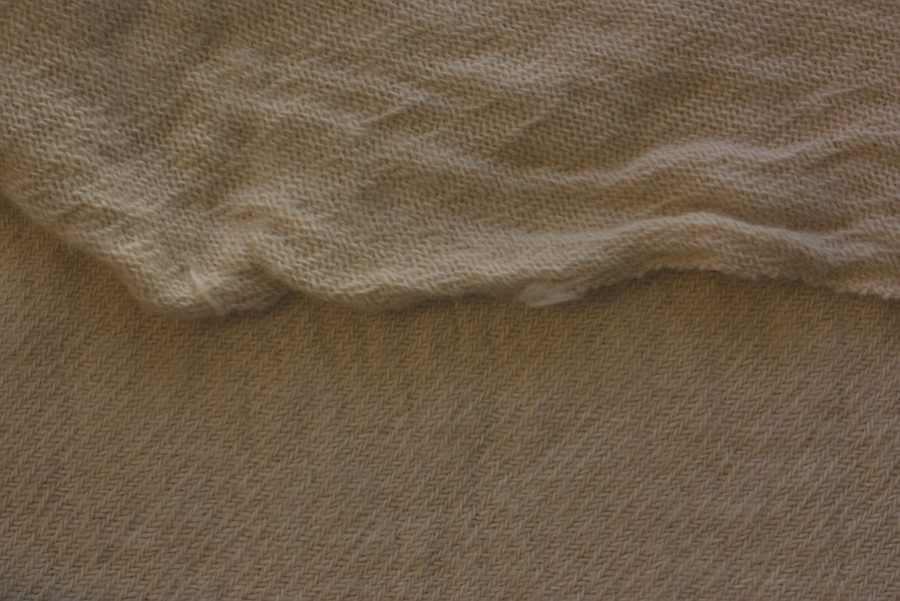Search the Blog
Latest Comments
Katrin
Experiment!
14 May 2024
Thank you for letting me know - I finally managed to fix it. Now there's lots of empty space above t...
Harma
Blog Break .
29 April 2024
Isn't the selvedge something to worry about in a later stage? It seems to me a lot more important th...
Beatrix
Experiment!
23 April 2024
The video doesn´t work (at least for me). If I click on "activate" or the play-button it just disapp...
Katrin
Spinning Speed Ponderings, Part I.
15 April 2024
As far as I know, some fabrics do get washed before they are sold, and some might not be. But I can'...
Kareina
Spinning Speed Ponderings, Part I.
15 April 2024
I have seen you say few times that "no textile ever is finished before it's been wet and dried again...
Surprise, surprise!
The fabric turned out wonderfully after being fulled - soft and lush and beautiful. It also surprised me a lot.
It's a fourshaft twill, which means every thread goes over two and under two, staggered to give diagonal lines. In a fairly balanced weave with a similar amount of warps and wefts per cm, that should result in a fabric that looks the same on both sides.
Well, guess what this cloth does not do?

Look the same on front and back.
There you go. Be surprised along with me! (Probably has to do something with the spin direction in relation to the twill direction...)
It's a fourshaft twill, which means every thread goes over two and under two, staggered to give diagonal lines. In a fairly balanced weave with a similar amount of warps and wefts per cm, that should result in a fabric that looks the same on both sides.
Well, guess what this cloth does not do?

Look the same on front and back.
There you go. Be surprised along with me! (Probably has to do something with the spin direction in relation to the twill direction...)



